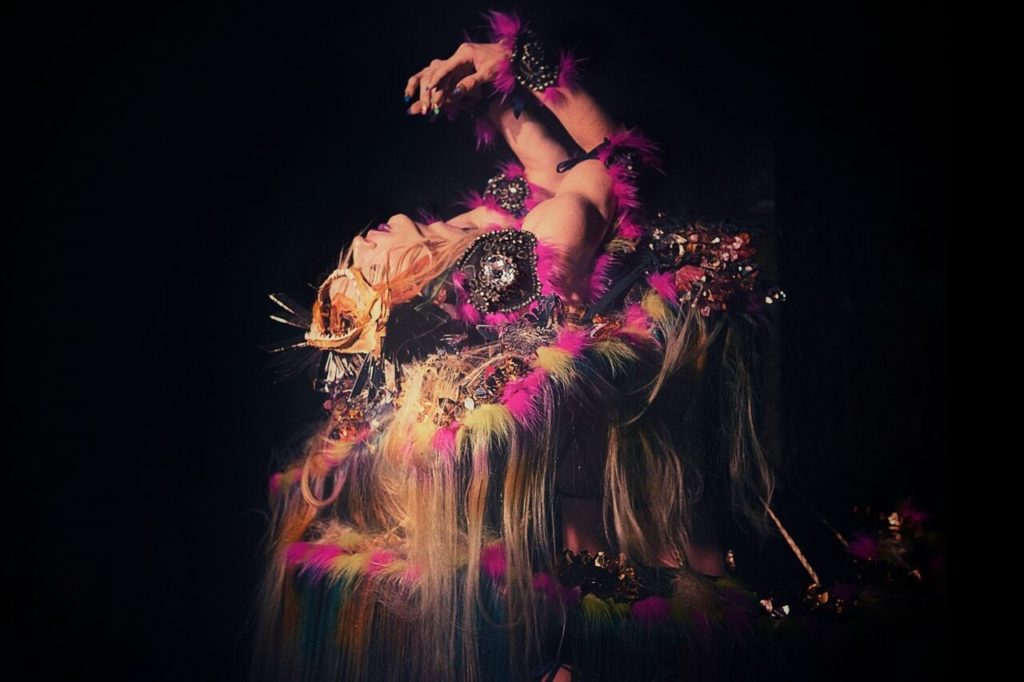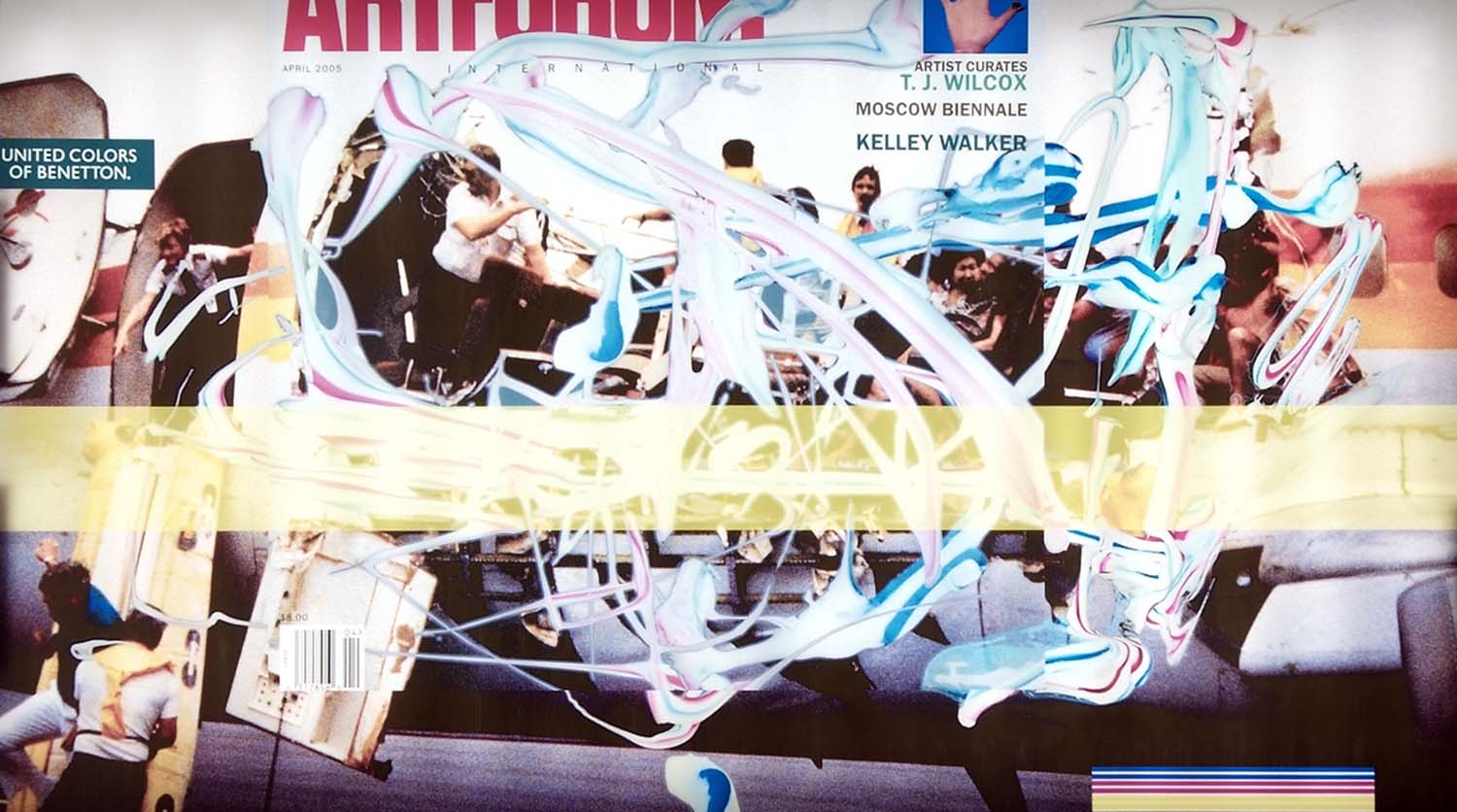Dance Office is a column dedicated to contemporary dance and performance art.

Marc Streit has been an associate artistic director at Tanzhaus Zürich since 2011, and has worked as a cultural entrepreneur and artistic organizer for several institutions dedicated to contemporary dance and performance art. In 2012, he founded the zürich moves! festival for contemporary arts practice in performing arts.
In the first installment of Dance Office, he discusses his recent projects and the ongoing evolution of how curators, practitioners and audiences understand dance and performance art.
Your practice is multifaceted; how do you define your curatorial focus?
Marc Streit: I understand myself as a networker, organizer, contextualizer, producer, artistic director and host in the field of contemporary performance and dance. This description is important to understanding what it takes to put together contemporary performance projects in today’s art world.
How did you start being interested in such a specific field?
What fascinates me most is the fact that we are dealing with real bodies, humans, and an audience which has to be taken into account, not only in the artistic creation of pieces but also in the mediation and presentation of these artistic works.
Live performance rooted in dance and theater has always been my main interest, and the recent development and shift in the field keeps nourishing my interest. I am very much driven by the creative process in performance practice, in which failure and slippage are integral parts as well as vulnerability and precariousness due to liveness and ephemerality. Precariousness is also reflected in the programming of contemporary performance and dance, as the perception of the audience is as individual as its diversity.
I am interested in hybrid forms of contemporary performance, and a key aspect is to always try to put a work in the right context or format. By contextualizing and queering both bodies and spaces, I am looking for experiences that push boundaries and investigate our contemporary society beyond physical performance. I usually work around a different topic. My research and the process of constructing a certain program is always inextricably tied to an overall discourse and the content of the respective artistic works that are being presented alongside each other. It is always a balancing act in order to make an attempt to frame an artistic work and yet give the work itself enough room and let it speak for itself. I like to incorporate a discursive dialogue, which should support the accessibility of an artistic practice and use theory to juxtapose ideas and interpretations.
How has the field of dance and performance production changed since you started curating?
Over the last two decades, it has certainly found new modes of production and new formats for presentation. Not only is there a new audience, but the people contextualizing these platforms have experienced a shift in their role, as their so-called “curator profiles” keep evolving.
I believe that the transition of Tino Sehgal’s work, in the early 2000s, from the classical stage to the museum — namely, after (untitled) (2000) — has contributed to this change and opened a new field of opportunities for dancers and performances. This has also opened the field to an exploitative and populist approach to dance, seen as a form of mere entertainment or decoration of the space without a particular curatorial reason. How many times in the recent past have we seen dancers crawling down the stairs of a museum? I blame it on a lack of education and understanding of the field, but also on a pure desire to exploit a field that is new and therefore “cool.” What is your stance?
Contemporary dance and performance in the visual arts context is about witnessing the here and now, about sharing time and space. The fact of exploiting an artist or performer is a question of how you frame a certain situation or performance and how precisely the space and the respective audience is taken into account. What one needs to understand is that there is no scheme that can be applied to all the various forms of representation in contemporary performance practice. Therefore each work of art has to be treated individually and dealt with as a very unique construction with real bodies in real time requiring a very particular sensibility.
Can you give an example of this from your recent curatorial projects?
A very good example is the performance Supernatural (2015) by Simone Aughterlony, Antonija Livingstone and Hahn Rowe, which I first saw in the studio during rehearsals in Zurich. It immediately appeared to me that the work needed a certain proximity in order to speak to me. Even though the piece was originally created for the theater, I proposed the artists present the piece in a white cube during the zürich moves! festival, and later in an outdoor parking lot in downtown Los Angeles, during the Queer Biennial II.
You co-curated the Queer Biennial II in 2015 in Los Angeles. Among the performances, I’d like to mention François Chaignaud’s Dumy Moyi (2013), a powerful work about identity and the pleasure of performing. I consider François to be among the most talented performers of this generation, with a physical and intellectual dedication to exploring the meaning of movement on stage that is astonishing. The last time I was so moved by a dance piece was in 2002, when I saw Pina Bausch in Café Müller (1985). After that, for me, it was like a desert. I thought I would never again be moved by dance in such an intense way; then came François…
Indeed, François is an exceptional thinker, creator and performer, with a practice that challenges themselves every single time anew and yet facilitates the spectator and catapults them into another universe. An exceptional example of an honest, intimate, complex, stylized and yet disturbing artistic practice.
You also founded the zürich moves! festival, an annual platform breaking boundaries between different contemporary practices in the performing arts. Can you talk about it?
Every year the festival program is done around a different topic and builds a different curatorial context. The artistic work is presented in various spaces and through multiple collaborations ranging from site-specific projects, the black box, the white cube and off-spaces. The multifaceted platform creates time-based experiences, engages and challenges the embodied presence and abstraction of the body. The very core idea of the festival is to bring contemporary performance to more hybrid spaces, disrupting the distance between performer and audience, creating an artistic flow and breaking the traditional and classical idea of normative thinking. During the past six editions, I forged the festival into a happening of artists and spectators, an intersection between art and life.
In order to put together the programming for zürich moves! not only does the individual artwork have to be taken into consideration, but also the overall dramaturgy of the entire format, in the sense that the artwork itself and the experience created by the work — the geographic location of the venue, the time and duration of the work, the number of people — have to be taken into account while organizing the festival.
What are the key questions you have to keep asking yourself in the course of your practice?
Where and when is it most appropriate to present a piece, and what effect will that have on the perception of the work? What is the aim of the artist? How much attention can be given to a piece as a spectator and how much attention is needed? What is the maximum number of spectators in a space? What experience is conveyed through the work? Do I allow people enough time to reflect on a piece? Therefore it is essential to see each work before inviting an artist to collaborate.
How do these questions and answers apply to a pragmatic curatorial choice?
When I saw the work #NEGROPHOBIA (2015) by Jaamil Olawale Kosoko for the first time, the space seemed too big to me and I asked Jaamil whether he could agree to show the piece in the same setting but in a much smaller venue. It seemed to me that through the dimension of the space the spectator was able to dive into this very important and powerful artistic creation, which is disturbing and soothing at the same time.
Another example was the one-on-one encounter with artists in “Eternal One-Night Stand” in collaboration with Random Institute for zürich moves! 2015. A wooden labyrinth construction led the visitor through eight different spectacles and private encounters with the artists. The evening entailed one-on-one performances in which each visitor experienced each performance on their own. Each spectator got to spend ten minutes with the eight participating artists before moving on to the next “box” along the wooden maze. Once in the sequence the visitor could only move forward and had to commit to the eighty-minute cycle. The installation ran over the course of five hours.
Finally, can you talk about your position at Tanzhaus Zürich, one of the most important centers for contemporary performance and dance in Switzerland, and its current architectural development and renovation?
Tanzhaus Zürich was founded in 1996 as Tanzhaus Wasserwerk and is mainly funded by the city of Zurich. In 2012 one of the buildings at Tanzhaus Zurich was destroyed by a fire. A new, state-of-the-art facility is being constructed and should be finished by the end of 2018. The new building will improve conditions for dance professionals (studios, a main stage plus a professionally equipped studio stage) as well as the general workflow (larger technical service spaces and storage facilities). Tanzhaus Zürich will definitely gain more visibility and further broaden its reach beyond Switzerland.

